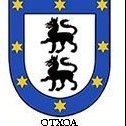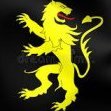-
Posts
155 -
Joined
-
Last visited
Profile Information
-
Gender
Male
-
Location
Los Angeles
Recent Profile Visitors
991 profile views
Vonbraun's Achievements

New Member (2/9)
165
Reputation
-
On earlier models the primer tank was in the cockpit.
-
Here is a page from Merrick and Hitchcock's The Official Guide to Painting German Aircraft... 41 is much lighter than 66 according to this source. Although it was published over 40 years ago it is still an excellent source for color information. But perhaps newer information contradicts?
-
The oil cooler is the Erla type. Oil cooler and associated lower cowl could be natural metal. Great photo BTW...
-

1/48 Eduard Bristol F2b Fighter 'Profipack' Edition
Vonbraun replied to Epeeman's topic in Ready for Inspection - Aircraft
Awesome! -
Here is a link to Barry Numerick's Bf 109 H V55 conversion: https://www.britmodeller.com/forums/index.php?/topic/235038013-messerschmitt-me-209-h-or-is-it-the-bf-109-v-55/
-
Perhaps the drawing does depict the K style oil cooler. The rear of the cooler does not flair into the fuselage as with the original G type, rather it is depicted as extending from the fuselage, consistent with the K machines.
-

Tamiya 1/32 “Birdcage” Corsair ‘Daphne-C’
Vonbraun replied to Dansk's topic in Ready for Inspection - Aircraft
Absolutely brilliant! -

EL AL Israel Airlines Boeing 757-200 /// 4X-EBV 1:144
Vonbraun replied to RCI's topic in Ready for Inspection - Aircraft
Wow! That is marvelous!!! -
The artist was Brian Knight.
-

Attention Luftwaffe Experts... He162 Color Help needed
Vonbraun replied to Tokyo Raider's topic in Aircraft WWII
Here is a shot of a JG 1 machine in the US after the war... Power egg looks to me like RLM 81, vertical fin and forward fuselage RLM 76, gear door 65? The upper fuselage could be RLM 71 or 71/ 81 combo or? Wing tip looks like RLM 71 or ? -

Attention Luftwaffe Experts... He162 Color Help needed
Vonbraun replied to Tokyo Raider's topic in Aircraft WWII
The belief that RLM 83 was green came about because researchers 50 years ago had a RLM document (Sammelmitteilung 2, dated 15 August 1944) listing RLM paints by number only, that is, with no descriptive terms or color samples. All of these RLM paints were identified in other documents as to color, except RLM 83. Concurrently, information about late war greens was also evolving. Researchers had three different sample of late war greens. RLM 81 and 82 accounted for two, so the remaining green must be the missing color for RLM 83. In reality there were only two late war greens RLM 82 and RLM 81, but the later was seen in two distinct forms, a dark green and a dark olive brown. This is why early researchers assumed there were three late war greens. Recently more information on RLM 83 has surfaced. There is a RLM message documenting the development of a dark blue camouflage paint for use exclusively by aircraft operating over the Mediterranean Sea. This paint was initially identified as 300/III during the testing phase but after acceptance was changed to RLM 83. In November 1943 RLM released documentation announcing the introduction of RLM 83, and describes its use in with RLM 72 for seaplanes and RLM 70 for land based aircraft operating in the Mediterranean. -

Attention Luftwaffe Experts... He162 Color Help needed
Vonbraun replied to Tokyo Raider's topic in Aircraft WWII
The RLM specifically directed the use of 81/71 or 82/70 combinations in order to use the remaining stocks of the earlier colors. Additionally RLM 83 is not green, but blue. Recent discoveries in the German records clearly establish this. RLM 83 was developed for use on bombers operating in the Mediterranean, but did not see much use. -
The early production Bf 109 Fs did not have the lens cover, it was introduced during F-2 production. The photo above with the man is painting a cockade on the wingtip is an accurate depiction and is not missing a lens cover. I believe Zvedza is the only kit manufacturer to pick up on this detail in their 1/48 scale Bf 109 F-2 kit, in that it provides both types. The bulb itself would have been subcontracted and very likely interchangeable between various marks.
-
- 14 replies
-
- 4
-

-







